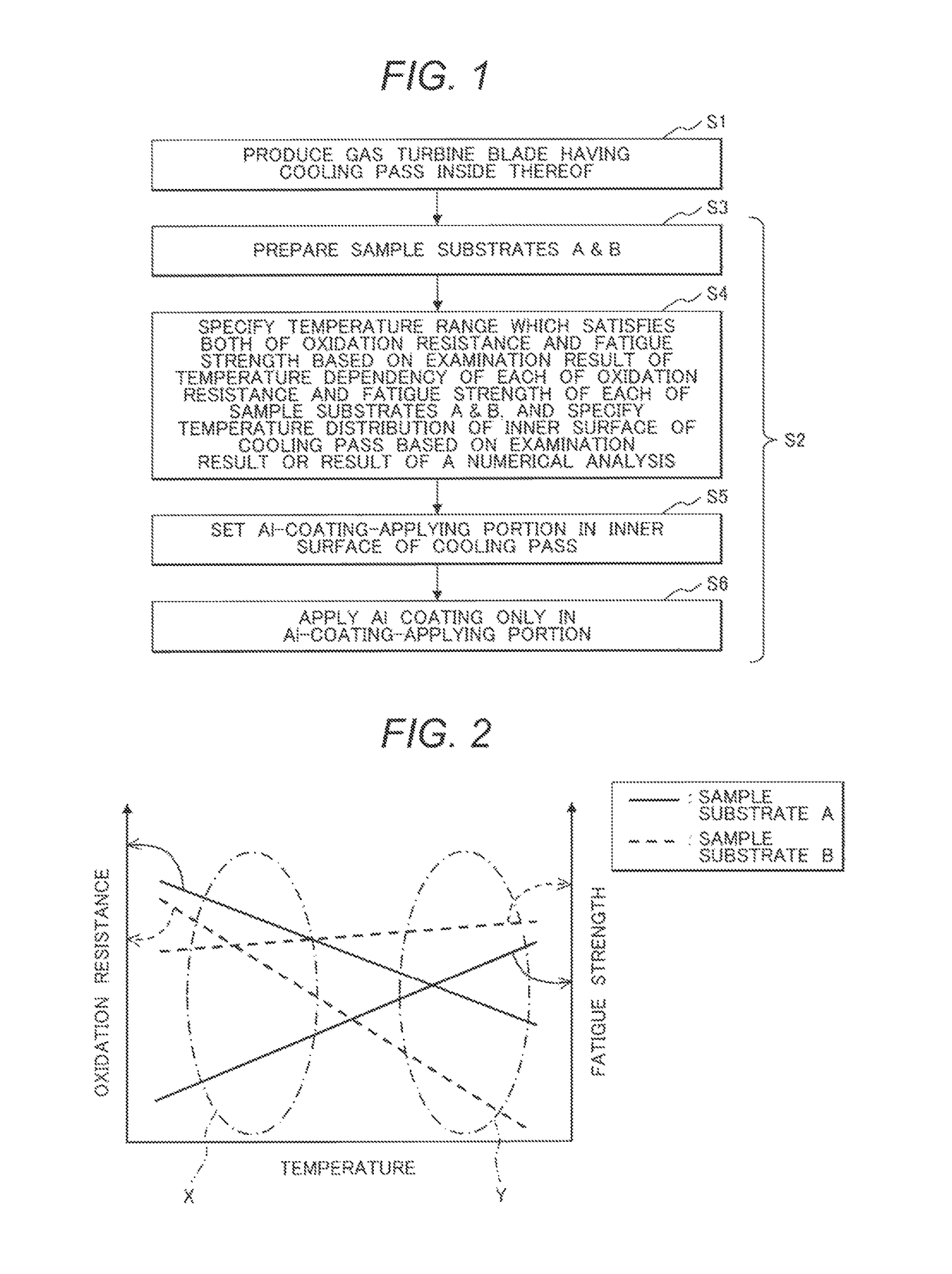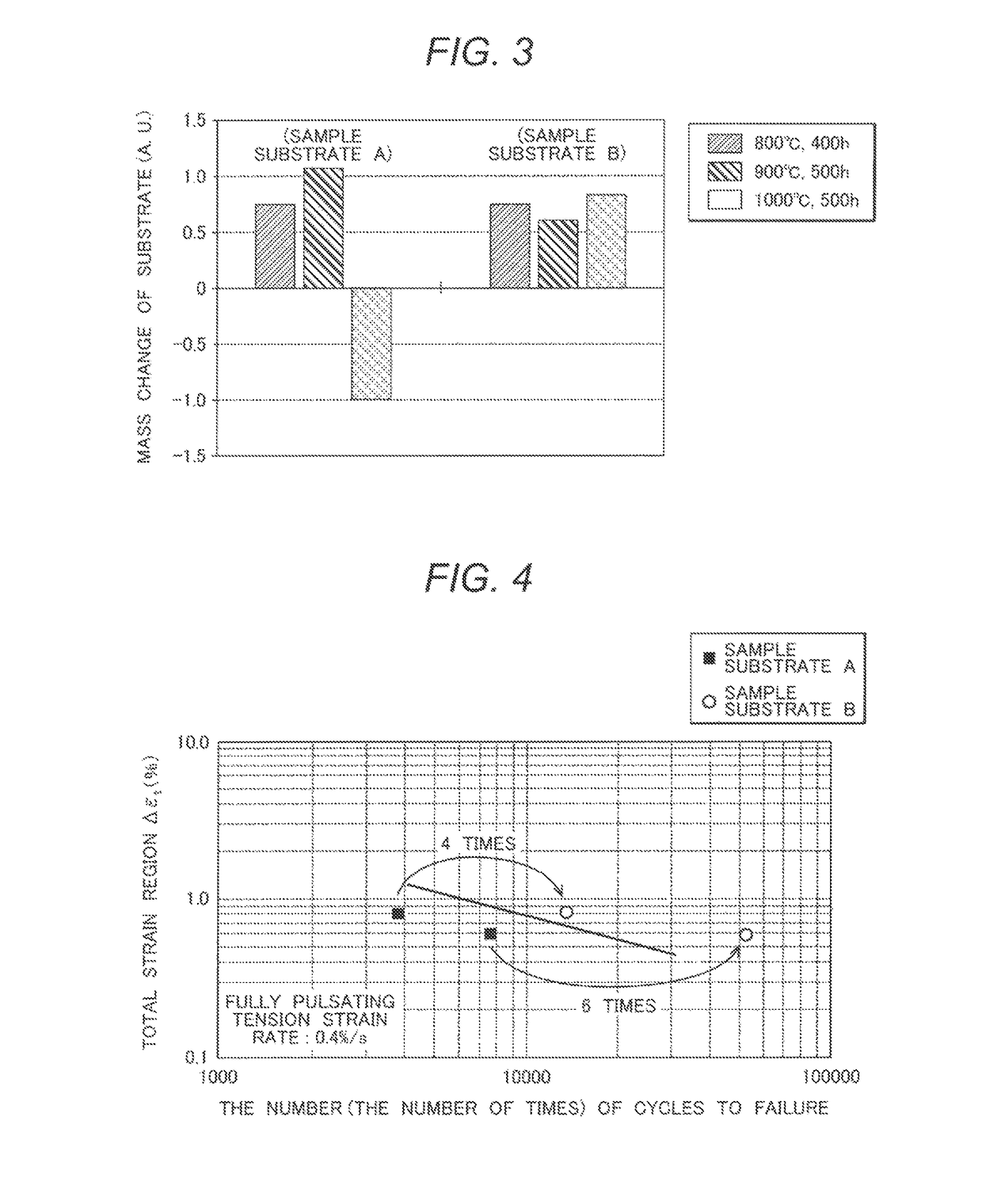Method for manufacturing gas turbine blade, and gas turbine blade
a technology of gas turbine blades and manufacturing methods, which is applied in the direction of machines/engines, solid-state diffusion coatings, mechanical devices, etc., can solve the problems of increased temperature of the wastage of the cooling pass by oxidation, and exposed inner surface of the cooling pass, so as to improve oxidation resistance, improve toughness and ductility, and the blade fatigue strength is very important
- Summary
- Abstract
- Description
- Claims
- Application Information
AI Technical Summary
Benefits of technology
Problems solved by technology
Method used
Image
Examples
examples
[0090]The following will demonstrate specific examples of the Al coating method of the present invention.
[0091]An Ni-based alloy (Ni-13.8Cr-6.8Co-1.8Mo-4.0W-4.0Al-2.8Ta-1.2Nb-3.4Ti-0.015B-0.14C (mass %)) suitable for gas turbine members was precisely casted and then the resultant was subjected to machine work to yield a gas turbine blade having at the inside thereof a cooling pass.
[0092]About this gas turbine blade, on the basis of the shape of the internal cooling pass, the volume of cooling air, and others, a temperature distribution in the inner surface of the cooling pass was gained by a numerical analysis. The present example gave a result that the respective temperatures of the leading edge and the trailing edge of the blade tip reached to a high temperature of 900° C. and the temperatures of most portions of the blade were 800° C. or lower.
[0093]In order to examine the temperature dependencies of the oxidation resistance and the fatigue strength of the blade, a high temperatu...
PUM
| Property | Measurement | Unit |
|---|---|---|
| temperatures | aaaaa | aaaaa |
| temperature | aaaaa | aaaaa |
| temperature | aaaaa | aaaaa |
Abstract
Description
Claims
Application Information
 Login to View More
Login to View More - R&D
- Intellectual Property
- Life Sciences
- Materials
- Tech Scout
- Unparalleled Data Quality
- Higher Quality Content
- 60% Fewer Hallucinations
Browse by: Latest US Patents, China's latest patents, Technical Efficacy Thesaurus, Application Domain, Technology Topic, Popular Technical Reports.
© 2025 PatSnap. All rights reserved.Legal|Privacy policy|Modern Slavery Act Transparency Statement|Sitemap|About US| Contact US: help@patsnap.com



